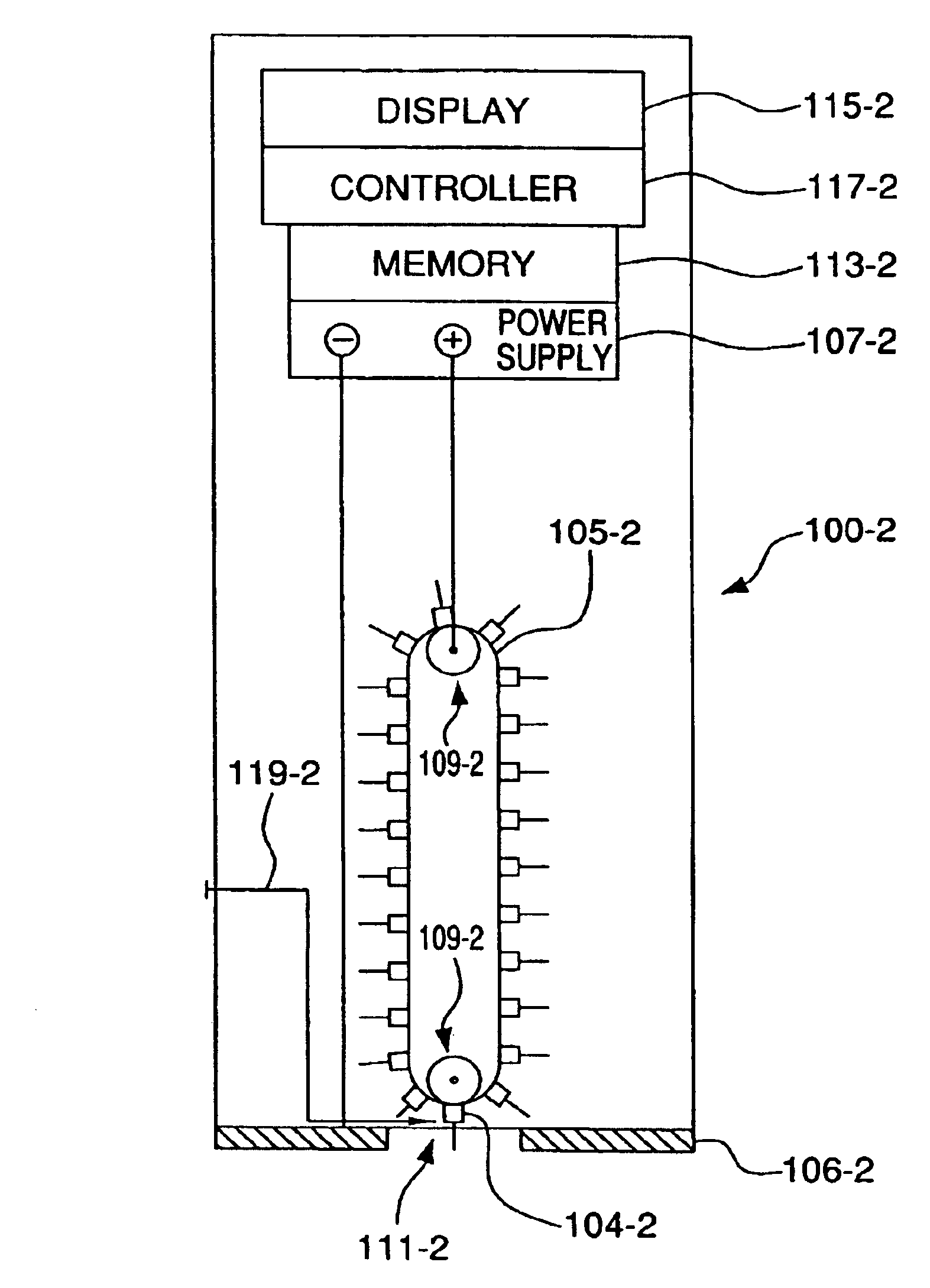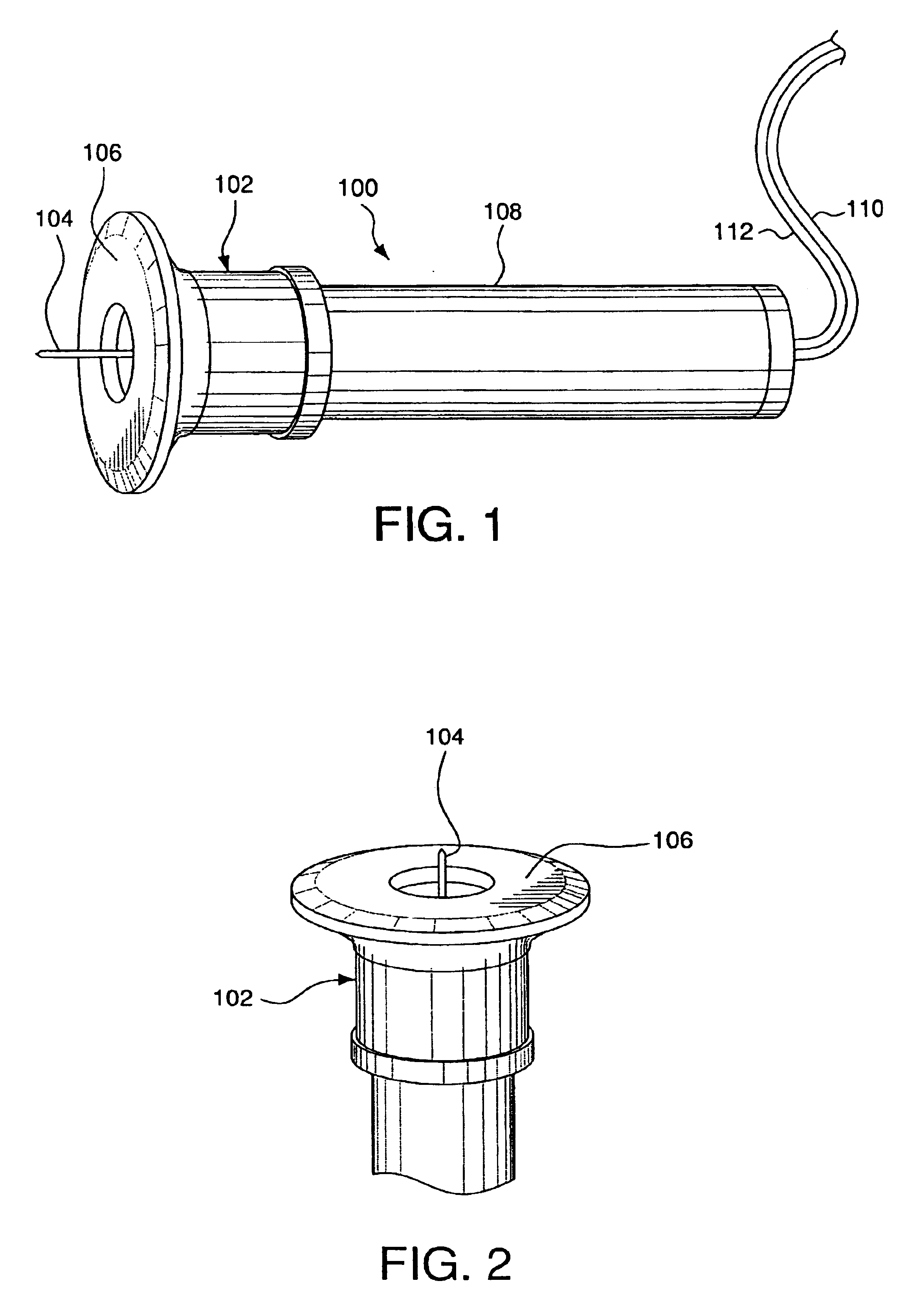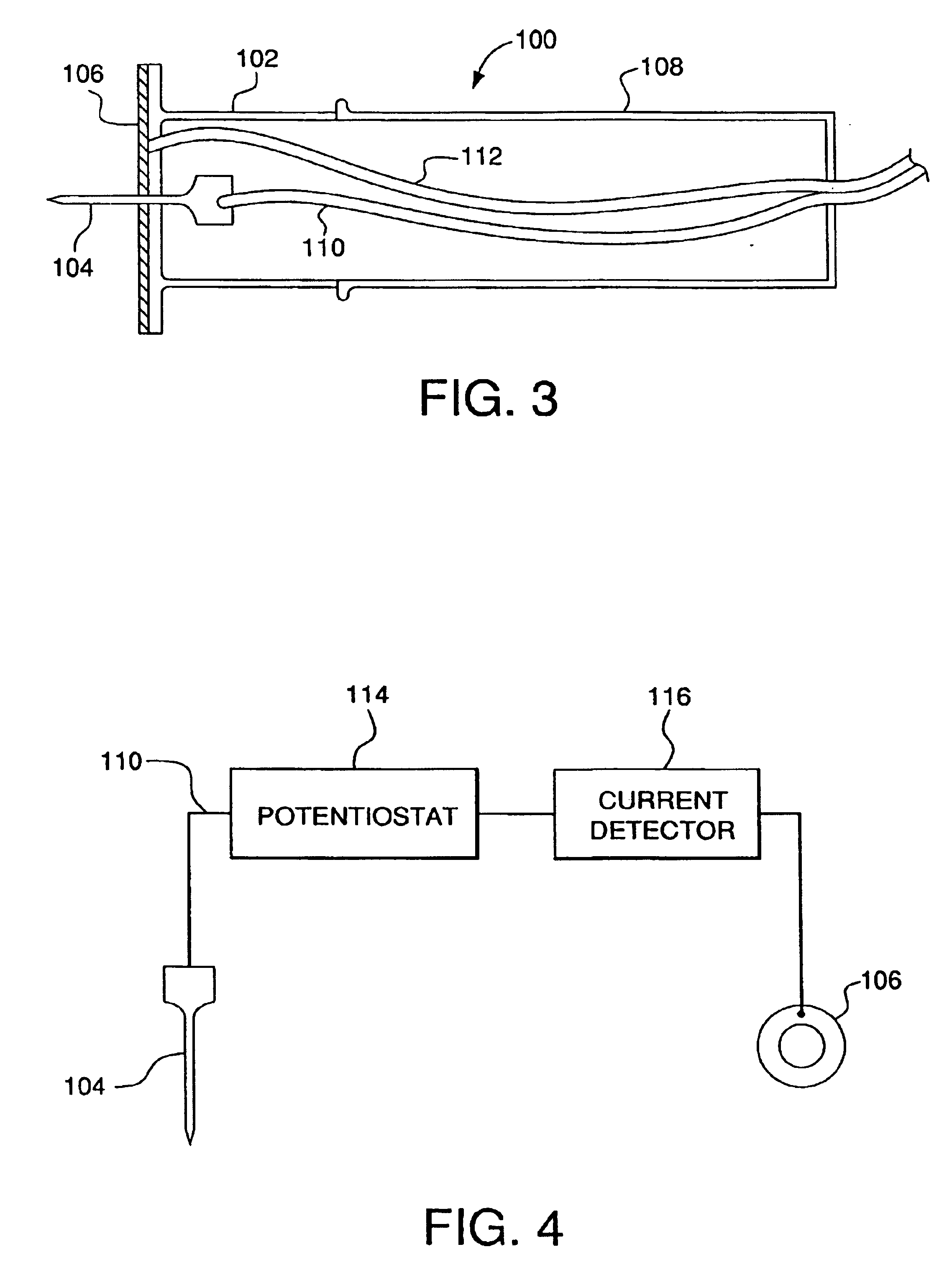Minimally-invasive system and method for monitoring analyte levels
a technology of analyte and minimally invasive system, which is applied in the field of minimally invasive system and method for monitoring analyte levels, can solve the problems of mental confusion, coma and ultimately death, damage to blood vessels, eyes, kidneys and other organs of the body, etc., and achieve the effect of increasing the sensitivity of the device and improving the current flow through the devi
- Summary
- Abstract
- Description
- Claims
- Application Information
AI Technical Summary
Benefits of technology
Problems solved by technology
Method used
Image
Examples
Embodiment Construction
[0025]FIGS. 1-6 illustrate an analyte detecting device 100 according to an embodiment of the present invention. As shown in FIG. 1, the device 100 includes a base portion 102 which employs an active electrode 104 and an auxiliary electrode and or in combination therewith, a reference electrode 106 which are described in more detail below. As used herein, the terms counter or reference electrode include combinations thereof as is known in the art. The base portion 102 is connected to a housing 108 that extends along the lengthwise direction of the device 100. The base portion 102 and housing 108 can therefore act as the base of the device 100 that can be held during operation as described in more detail below. The base portion 102 can be fixed or pivotable with respect to the axis of active electrode 104 to any angle, by various means, for example, by constructing base portion 102 from an elastic material or providing a joint such that the active electrode can be inserted at a angle ...
PUM
| Property | Measurement | Unit |
|---|---|---|
| diameter | aaaaa | aaaaa |
| angle | aaaaa | aaaaa |
| length | aaaaa | aaaaa |
Abstract
Description
Claims
Application Information
 Login to View More
Login to View More - R&D
- Intellectual Property
- Life Sciences
- Materials
- Tech Scout
- Unparalleled Data Quality
- Higher Quality Content
- 60% Fewer Hallucinations
Browse by: Latest US Patents, China's latest patents, Technical Efficacy Thesaurus, Application Domain, Technology Topic, Popular Technical Reports.
© 2025 PatSnap. All rights reserved.Legal|Privacy policy|Modern Slavery Act Transparency Statement|Sitemap|About US| Contact US: help@patsnap.com



